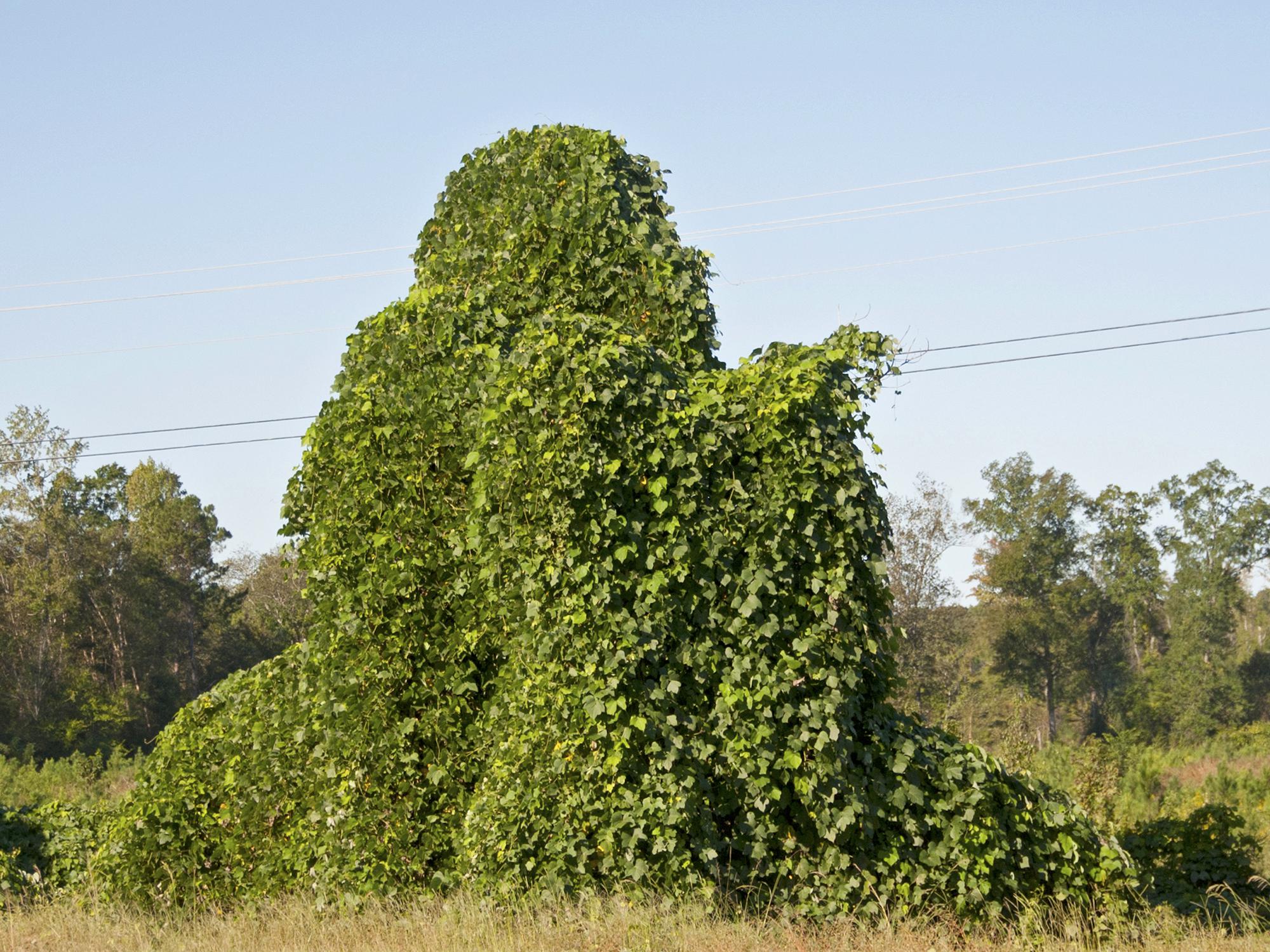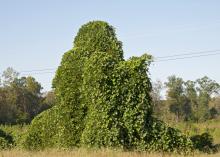Information Possibly Outdated
The information presented on this page was originally released on January 8, 2016. It may not be outdated, but please search our site for more current information. If you plan to quote or reference this information in a publication, please check with the Extension specialist or author before proceeding.
Not all aliens on Earth come from outer space
STARKVILLE, Miss. -- Everywhere you look, you can see something that wasn’t originally part of Mississippi’s landscape.
From fire ants that came ashore in the early 20th century to a Eurasian sedge thought to have been transported by visitors to the grave of the Gypsy Queen in a Lauderdale County cemetery, Mississippi has a wide variety of invasive species. Kudzu, Chinese privet, cogon grass, Asian carp, pine beetles and wild hogs are other examples of plants and animals that have invaded Mississippi’s landscape.
What are invasive species? The term may sound like I’m referring to aliens deliberately waging a hostile takeover of Earth, but it simply means plants, animals and insects that are not native to a particular area. Ever since the Age of Exploration sent people across the globe in the 1600s, humans have deliberately and accidentally transferred a variety of species from one area to another. While some species spread naturally, many are moved by diverse human activities ranging from oceanic cargo shipping to the exotic pet trade.
Anyone who has dealt with fire ants can attest to the fact that invasive species can be a nuisance, but beyond the frustration experienced by humans, invasive species can have significant ecological impacts because they can outcompete or displace native species.
For example, in places that were once occupied by native blueberry shrubs in the understory of our Southeastern forests, we now see Chinese privet. All the animals and insects that used blueberry for food and cover now have to make do with the alien privet shrubs. Some animals can adapt to this new shrub, as white-tailed deer have, but other animals and insects may not be so lucky.
Another example is the impact of invasive Johnson grass on native wildlife that depend on native forages, such as eastern wild turkey and northern bobwhite quail.
Sometimes, creating an ecological problem is unintentional. Imagine a family is moving to a new place, and they just can’t take their pet goldfish with them, so they take it to a nearby stream, dump it in, and wave goodbye. Or, that sweet little snake they bought as a hatchling has grown larger than a St. Bernard and is no longer manageable within the confines of an apartment in the Florida Keys. So they set that now-giant snake free in a swamp.
On the surface, these small, random acts of what the pet owners perceive as kindness may not seem significant. But, as we’ve seen from the explosion of goldfish in the Great Lakes and Burmese pythons in the Everglades, when plants and animals end up in places where they have no natural population checks, the delicate balance of nature shifts dramatically.
Alien invaders rely on several strategies to help them dominate a new ecosystem, including high rates of reproduction, outcompeting native species for food and shelter, and the absence of predators, parasites and diseases that help regulate their population levels.
When invasive species become established, they have the potential to change the structure of a species within a community by causing changes in predator-prey interactions, the distribution of food and shelter, and other variables. Sometimes, the process of competition for resources is so intense, native species must adapt to different food and shelter resources or risk going extinct. Predators in particular have the ability to shape the entire food web of a community.
Mississippians have numerous invasive species to battle, but if everyone becomes more aware, knowledgeable and willing to join the fight against these invaders, we’ll see a positive result from working together.
For more information on invasive species, visit the MSU Center for Human-Wildlife Conflicts website at http://www.humanwildlifeconflicts.msstate.edu.





